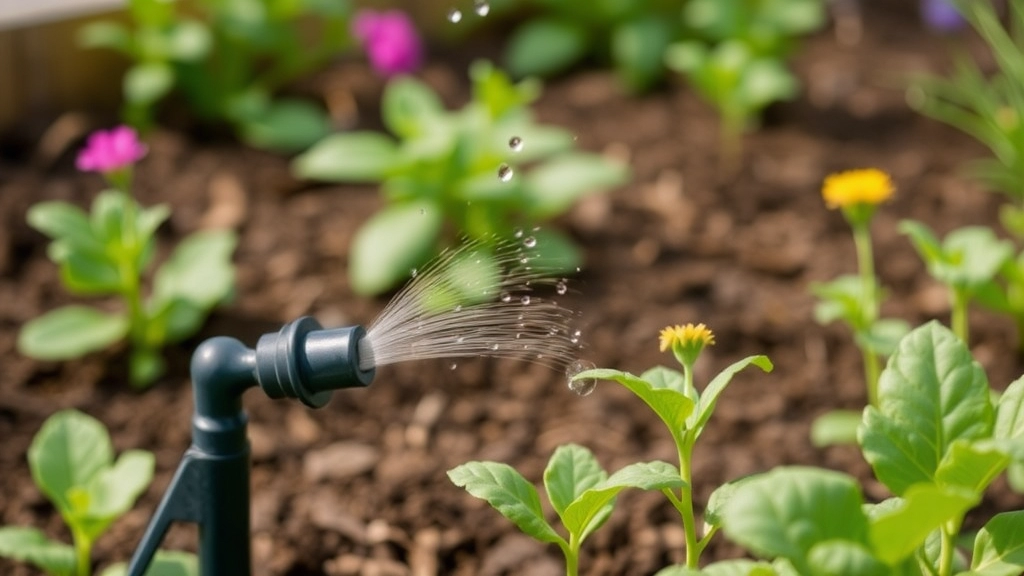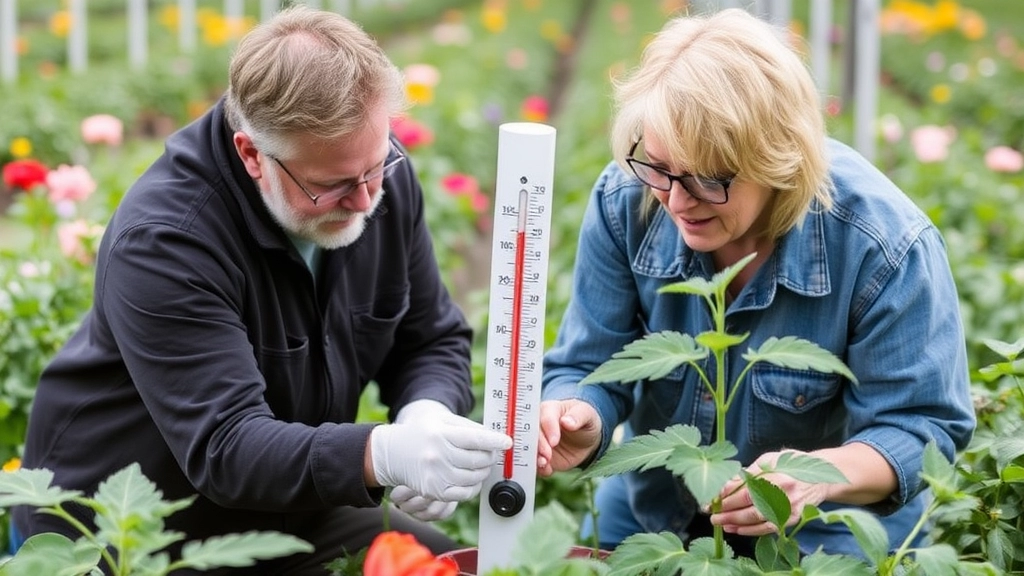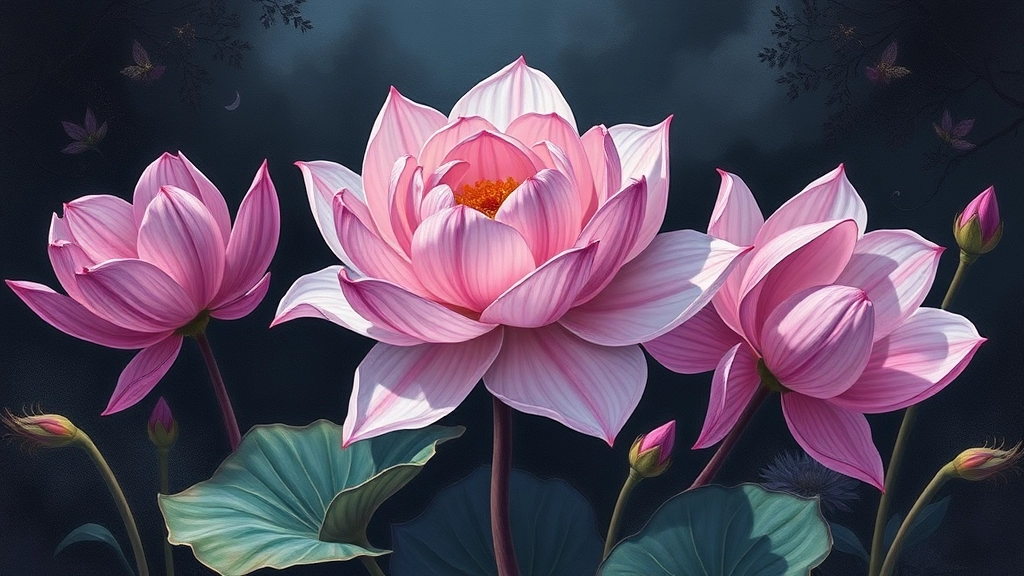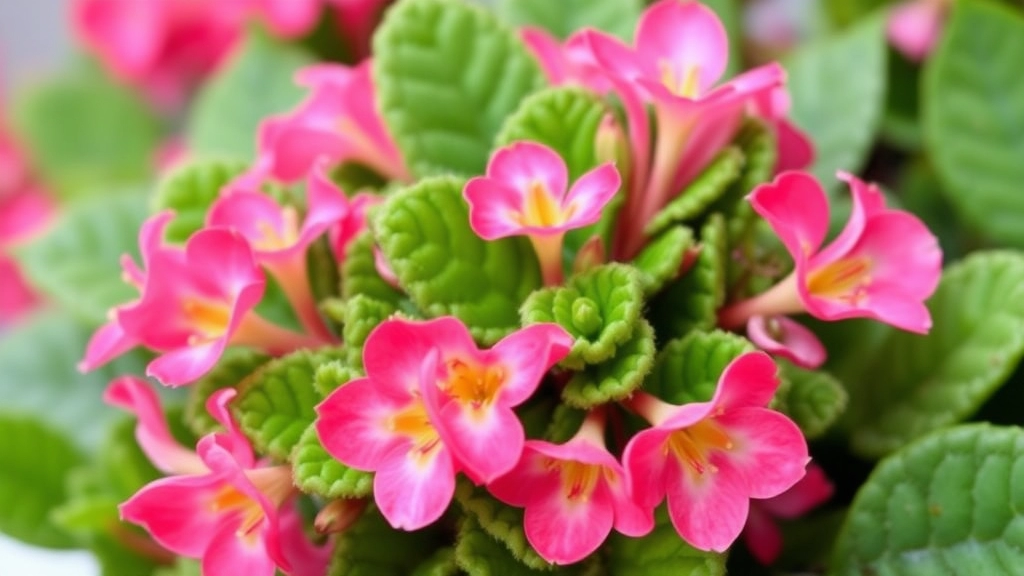Post-Flowering Care for Kalanchoe
Looking for tips on the care of kalanchoe after flowering? You’ve come to the right place. As a fellow plant enthusiast, I understand how crucial it is to keep your kalanchoe thriving even after its vibrant blooms have faded. Here, we’ll dive into essential care routines like pruning, adjusting watering schedules, and creating the perfect environment to encourage reblooming.
Essential Care Routines
After your kalanchoe has finished flowering, the first step is pruning. Snip off the spent flowers to promote new growth. Next, adjust your watering routine; kalanchoe needs less water during its rest period. Providing the right light conditions and managing temperature are also key to ensuring your plant remains healthy and ready to bloom again. Let’s get started on giving your kalanchoe the best post-flowering care!
How to Prune Kalanchoe After Flowering
Have you ever wondered how to rejuvenate your Kalanchoe after its vibrant blooms fade?
Pruning is essential for maintaining the health and aesthetics of your plant.
Here’s how to do it effectively:
Why Prune?
- Promotes New Growth: Pruning encourages fresh leaves and flowers.
- Prevents Legginess: Cutting back helps maintain a compact shape.
- Enhances Airflow: Reducing overcrowding improves circulation.
When to Prune
- Timing: The best time to prune is just after flowering, typically in late spring or early summer.
- Signs to Prune: Look for wilted flowers or leggy stems as indicators.
How to Prune
- Gather Your Tools: Use clean, sharp scissors or pruning shears.
- Identify Dead or Dying Stems: Focus on removing spent flowers and unhealthy leaves.
- Cut Just Above a Leaf Node: This encourages new growth from the node.
- Remove Excess Growth: Trim back any leggy stems to maintain a balanced shape.
Aftercare
- Watering: Adjust your watering needs post-pruning to avoid stress. For more details on how to prevent issues, check out our guide on why Kalanchoe leaves turn soft.
- Light Conditions: Ensure your Kalanchoe receives the right amount of light to support recovery. If you’re looking to maximize your plant’s lifespan, our care tips for maximizing Kalanchoe longevity might be helpful.
Adjusting Watering Needs Post-Bloom

So, you’ve enjoyed the vibrant blooms of your Kalanchoe, but now what? One of the biggest concerns after flowering is figuring out how to adjust your watering routine.
Why Watering Matters
After those beautiful flowers fade, your Kalanchoe enters a rest period. During this time, it’s crucial to tweak your watering habits to keep your plant healthy and happy.
Here’s what to keep in mind:
- Reduce Frequency: Cut back on watering. Instead of the usual schedule, water only when the top inch of soil feels dry. This helps prevent root rot.
- Check for Signs: Keep an eye on your plant. If the leaves start to wrinkle or look shriveled, it might be thirsty. On the flip side, if they’re mushy, you might be overdoing it.
- Seasonal Adjustments: Remember, in winter, your Kalanchoe needs even less water. The cooler temperatures mean it’s not using up moisture as quickly.
- Use Well-Draining Soil: Ensure your pot has drainage holes and use a mix that allows excess water to escape. This prevents soggy roots.
- Humidity Considerations: Kalanchoes prefer dry air, so keep humidity levels low. If you live in a particularly humid area, be extra cautious with your watering.
By fine-tuning your watering routine, you set the stage for your Kalanchoe to thrive.
Creating Optimal Light Conditions for Kalanchoe
After ensuring that your Kalanchoe is properly pruned and has adjusted to its new watering routine, it’s time to focus on light conditions.
Are you worried that your Kalanchoe isn’t thriving? Light is crucial for its health and blooming potential.
Key Points for Optimal Light Conditions:
- Bright, Indirect Light: Kalanchoe thrives in bright but indirect sunlight. A south or east-facing window is ideal. Direct sun can scorch the leaves, while too little light may hinder growth.
- Duration: Aim for about 6 hours of light daily. If natural light is limited, consider using grow lights to supplement.
- Seasonal Adjustments: During winter, when daylight hours are shorter, consider rotating your plant to ensure even light exposure on all sides.
- Signs of Insufficient Light: If you notice elongated stems or pale leaves, your Kalanchoe may be stretching for light. Adjust its position accordingly.
- Avoid Sudden Changes: When relocating your plant, do so gradually to prevent shock. Sudden shifts in light can stress the plant.
For more detailed care instructions, check out our ultimate guide to flowering Kalanchoe care and learn how to ensure your plant blooms beautifully. Additionally, if you’re interested in propagation, our guide on propagating Kalanchoe Blossfeldiana cuttings can help you expand your collection.
Managing Temperature for Reblooming Success

After addressing pruning and watering, it’s crucial to consider how temperature impacts your Kalanchoe’s chances of reblooming.
Are you wondering why your Kalanchoe isn’t flowering again?
Temperature plays a vital role in the health and blooming cycle of your plant.
Here’s how to manage it effectively:
- Ideal Temperature Range: Kalanchoes thrive best in temperatures between 18°C and 24°C.
- Avoid Extreme Conditions: Keep your plant away from cold drafts and sudden temperature fluctuations.
- Nighttime Temperature: A slight drop at night can encourage blooming. Aim for around 15°C to 18°C during the night.
- Seasonal Adjustments: In winter, ensure the plant is not exposed to frost.
- Indoor Heating: If you use heating in your home, position your Kalanchoe away from direct heat sources.
By maintaining the right temperature, you create an environment conducive to blooming.
When and How to Repot Kalanchoe
After ensuring your Kalanchoe has been properly pruned and its watering needs adjusted, you might be wondering when the right time is to repot your plant.
Repotting is a crucial step in maintaining the health of your Kalanchoe, especially after flowering. You may notice signs that indicate it’s time for a new pot, such as:
- Root Bound: If roots are growing out of the drainage holes or circling the pot.
- Stunted Growth: When the plant seems to stop growing or blooms less frequently.
- Soil Degradation: If the soil appears compacted or depleted of nutrients.
When to Repot
The ideal time to repot your Kalanchoe is during the spring or early summer, just before the growing season kicks in. This timing allows your plant to acclimate to its new environment and encourages healthy growth.
How to Repot
- Choose the Right Pot:
- Select a pot that is one size larger than the current one, ensuring it has drainage holes.
- Prepare the Soil:
- Use a well-draining potting mix, ideally formulated for succulents or cacti.
- Remove the Plant:
- Gently take your Kalanchoe out of its current pot.
- Be careful not to damage the roots.
- Inspect the Roots:
- Trim any dead or rotten roots with clean scissors.
- This promotes healthier growth.
- Place in New Pot:
- Add a layer of soil to the new pot.
- Position the Kalanchoe in the centre and fill around it with more soil, ensuring it’s stable.
- Water Sparingly:
- After repotting, wait a week before watering to allow the roots to settle.
Repotting your Kalanchoe not only rejuvenates its growth but also gives you a chance to assess its overall health. If you’re looking for more specific care tips, check out our Kalanchoe Paddle Plant care guide or learn about causes and solutions for Kalanchoe leaves curling.
Encouraging Reblooming with Darkness Cycles

So, you’ve pruned your Kalanchoe and adjusted its watering needs. Now, let’s talk about a little secret to getting those beautiful flowers to bloom again: darkness cycles.
Have you ever noticed how some plants just seem to thrive in the dark? Well, Kalanchoe is one of those plants. It needs a bit of a light trick to encourage reblooming.
What Are Darkness Cycles?
Darkness cycles are periods when your plant gets less light than usual. This helps signal to your Kalanchoe that it’s time to bloom again. It’s like giving it a little nudge to say, “Hey, it’s time to show off those flowers!”
How to Implement Darkness Cycles
Here’s how you can do it:
- Choose a Time: Start the darkness cycle about six weeks before you want blooms.
- Light Schedule: Place your Kalanchoe in complete darkness for 14-16 hours each day.
- Return to Light: After the dark period, give it bright, indirect light for the remaining hours.
Tips for Success
- Consistent Timing: Keep the cycle consistent. Plants love routine!
- Avoid Interruptions: Make sure no light sneaks in during the dark hours. Even a small amount can confuse the plant.
- Monitor Growth: Keep an eye on your plant. If it’s looking healthy and vibrant, you’re on the right track!
Propagation Tips for Kalanchoe After Flowering
After successfully pruning and caring for your Kalanchoe post-bloom, you might be wondering how to propagate this resilient plant. Propagation can be a rewarding way to expand your collection or share with friends.
FAQs on Care Of Kalanchoe After Flowering
How should I adjust watering for my Kalanchoe after it has finished flowering?
After your Kalanchoe has finished blooming, reduce the watering frequency. Water only when the top inch of soil feels dry to prevent root rot. Make sure to use well-draining soil and keep humidity levels low.
What signs should I look for to know if my Kalanchoe needs water?
If the leaves of your Kalanchoe start to wrinkle or look shriveled, it might be thirsty. Conversely, if they appear mushy, you might be overwatering.
How does temperature affect the reblooming of my Kalanchoe?
Temperature plays a crucial role in the blooming cycle of Kalanchoe. They thrive best in temperatures between 18°C and 24°C. A slight drop to around 15°C to 18°C at night can encourage blooming. Avoid exposing the plant to cold drafts and sudden temperature fluctuations.
What is the ideal temperature range for Kalanchoe plants?
Kalanchoes thrive best in temperatures between 18°C and 24°C, with a slight drop at night to encourage blooming.
How can I encourage my Kalanchoe to rebloom using darkness cycles?
Kalanchoes require darkness cycles to encourage reblooming. Place your plant in complete darkness for 14-16 hours each day for about six weeks before you want it to bloom. During the remaining hours, provide bright, indirect light.
What are some tips for successfully implementing darkness cycles?
Keep the darkness cycle consistent and avoid interruptions. Ensure no light sneaks in during the dark hours, as even a small amount can confuse the plant. Monitor your plant’s growth to ensure it remains healthy and vibrant.
How should I adjust watering in winter for my Kalanchoe?
In winter, Kalanchoes need even less water due to cooler temperatures. Water sparingly and ensure the soil is dry before the next watering to prevent overwatering.
What kind of soil is best for Kalanchoe plants?
Use well-draining soil for Kalanchoe plants. Ensure your pot has drainage holes to allow excess water to escape, preventing soggy roots.
Can indoor heating affect my Kalanchoe?
Yes, indoor heating can affect your Kalanchoe. Position your plant away from direct heat sources to maintain a stable and suitable temperature for its growth and blooming.
References
-
Kalanchoe Plant Care Indoors
-
Kalanchoe Plant Care: Tips For Growing Kalanchoe Plants
-
Kalanchoe Plant: How to Grow and Care Guide
